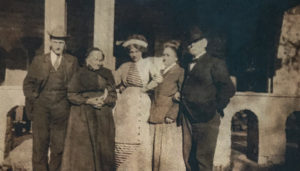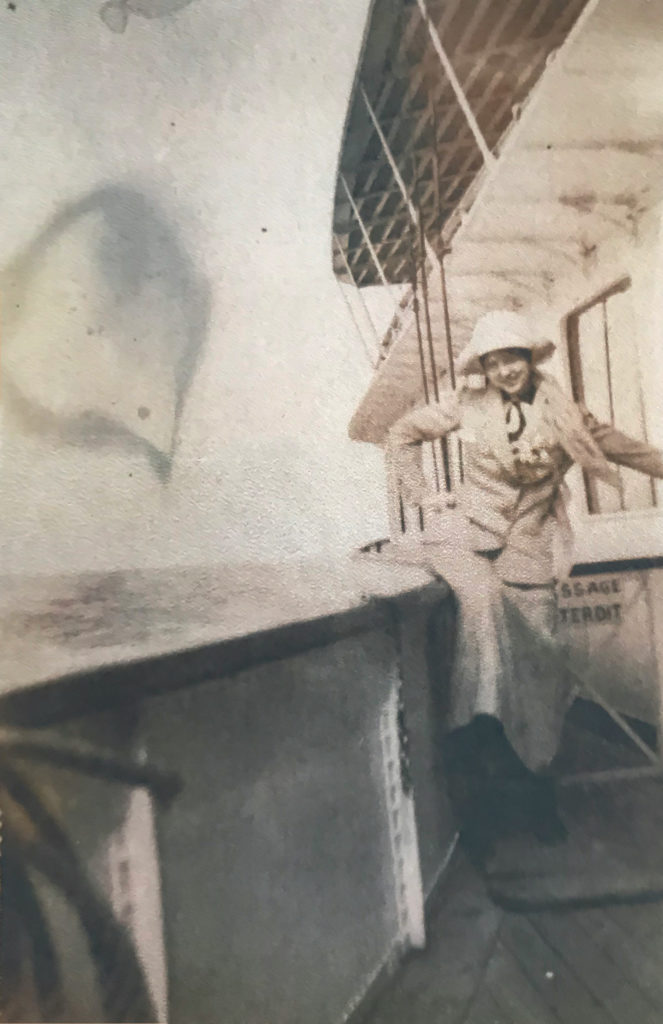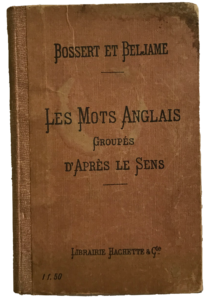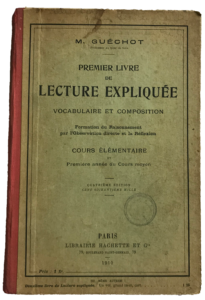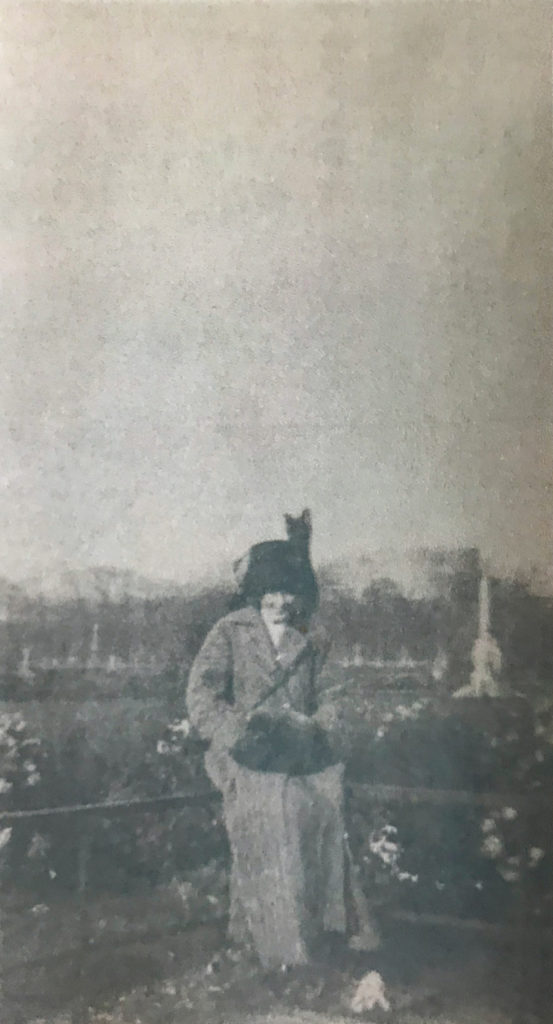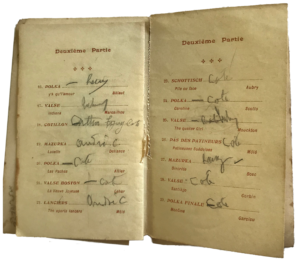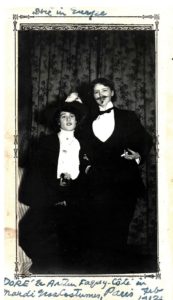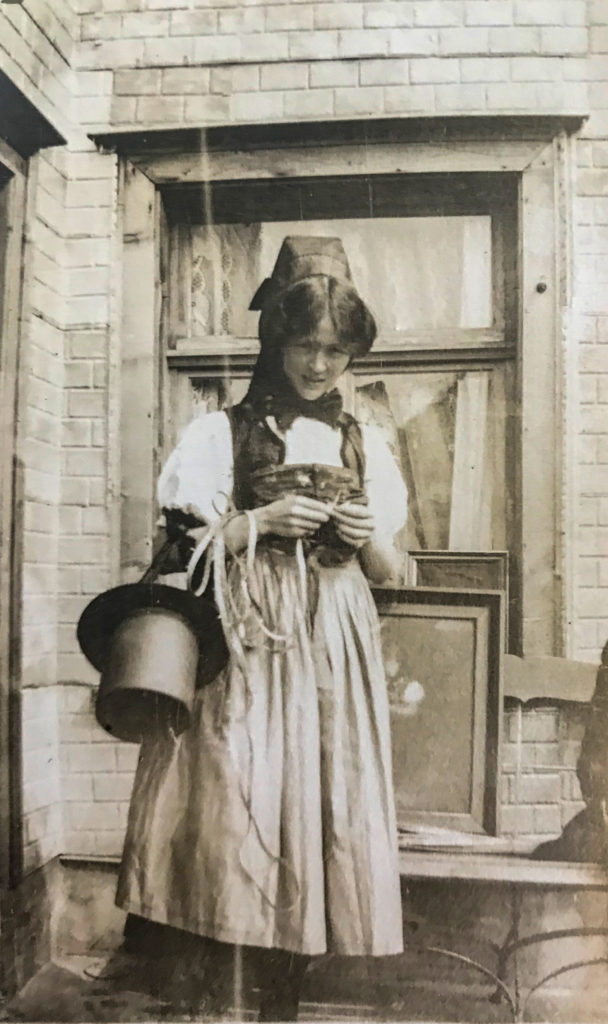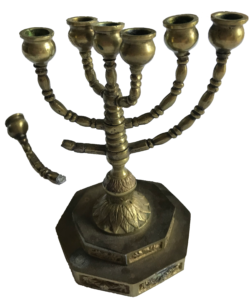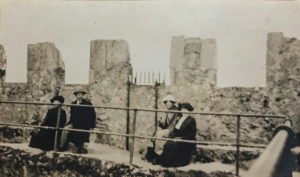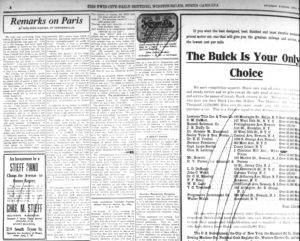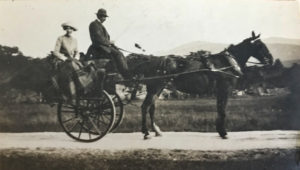Doré Körner: Adventurer, Genealogist, and Journalist
In a time before Ancestry.com and the lavish travel blogs modern internet users are accustomed to, Doré Körner embarked on an adventure atypical of a woman of the time, securing her role as a cultural and genealogical ambassador. In addition to her extensive artistic studies, Doré conducted in-person Körner-genealogical research all while serving as a travel correspondent for the Twin City Sentinel.
Allie Doré Körner Donnell (1889-1980), often known to her friends and family as sweet, docile Doré, defied early 20th century conventions and ventured by herself on a 14-month grand tour through Europe and the Middle East, from 1911 to 1913.
The tradition of a “grand tour” traces as far back as the 16th century, when wealthy men took a gap year between college and adulthood to travel the world. It was incredibly rare for women to travel abroad, and if they did, they were accompanied by a family chaperone. As a 21-year old Salem College graduate, Doré was expected to marry, like her classmates, and she had many suitors readily available. Instead, Doré seized an opportunity for freedom and adventure to trek on her own version of a grand tour, without an escort, to explore different cultures, and focus on “language, arts, and the different peoples.”
Abroad, other travelers were awed or suspicious of Doré’s freedom. A page from her August 1912 diary notes: “I find that I am considered quite a freak – a sort of being who might or might not have an elaborate history tagged onto them. All because I am travelling alone. What a disappointment when people find me a plain, very inexperienced American girl with nothing more or less in view than seeing things.”
Despite Doré’s father’s initial reservations, on November 21, 1911, he accompanied her on the train ride from Kernersville to New York City. Four days later, she boarded the French Transatlantic ocean liner, the SS Rochambeau, alone with Le Havre, France in her sights.
While aboard the SS Rochambeau, Doré admitted feeling overwhelmed by the French that she heard from the passengers around her. She wrote in her diary, “Two phrases I am prepared to say are: ‘Parlez vous Anglais?’ And ‘Je ne comprens pas le Francais!’” noting she wanted to improve her mastery of French.
Doré used these language books during her time in Paris, France. While she primarily studied painting, these books served as learning tools to help her gain a better grasp of the native language.
As a solo traveler, Doré distinctly understood the importance of language in Europe. In her 1912 diary, she wrote: “One thing I am sure is essential for real enjoyment when traveling alone in these much-visited countries. It is some knowledge of at least one other language besides English. With French and English one can go into Italy, Switzerland and Germany, in fact into most of the countries with little or no trouble.”
At the beginning of her time abroad, Doré spent approximately 6 months in Paris, staying with Madame Jacquot at 6 Rue Gît-le-Cœur near the Seine River. While there, she studied French language and took art classes for oil painting. She fell in love with the city, noting in her 1912 diary that “Her [Paris’] historical significance, her treasures of art, her universities, her buildings and of greater and lesser renown, all make her of extraordinary interest and importance.” In addition to her lessons, Doré had a full social calendar, enjoying the gaiety of the City.
The late 19th and early 20th century saw the dance card at peak popularity in the Western world. At a formal dance during this period, men would reserve dances in advance with the ladies in attendance, who would then use a dance card to keep track of their respective dance partners. This was done by writing a partner’s name next to the dance which they had reserved.
As well as serving a functional purpose, dance cards were often embellished with artistic flourishes and images, so that women often saved them as keepsakes. As indicated by the full dance card, vivacious Doré thrived in Parisian social life, participating in French holidays such as Mardi Gras and Easter.
After her time in Paris, Doré spent the next 7 months traveling throughout Europe and the Middle East. From an audience with Pope Pius IX at the Vatican to connecting with long-lost Körner relatives in Germany, Doré experienced a wide range of cultures and unique adventures.
While abroad, Doré visited the following destinations:
France: Paris, Versailles, Marseille.
Switzerland: The Matterhorn, Meiringen, Nontreux, Lake Geneva, Chamonix Mer de Glace, Urseren Valley.
Italy: Lake Como, Lugano, Lake Lucerne, Venice, Naples, Bologna, Florence, Rome, Pompei, Vatican City, Mt. Vesuvius.
Italy is famed for its majolica ceramics, the production of which dates back to the late 13th century. This type of tin-glazed ceramic gained a great deal of popularity in Europe during the Renaissance, with central and northern Italy in particular being renowned for majolica production. The red ‘fleur de Lis’ featured on this particular piece is known as the “Florentine lily.” The lily serves as a symbol of the city of Florence, Italy, where Doré most likely acquired the piece during her time in Italy.
Also while traveling in Italy, Doré had the opportunity to have an audience with Pope Pius IX in Vatican City. In a letter to her parents, she wrote:
“I stood near the door, and when the Pope was announced, and we all knelt, he stood near me – really very near, and if I had been a Catholic, I suppose I should have kissed his robe. He is such a dear, charming old man! He came in in a white robe, so that it hardly seemed that he was such a regal personage. In fact, he seemed nice, older man that they say he really is.”
To read the full excerpt of Doré’s “Observations in Rome,” click here.
Germany: Heidelberg, Munich, Nuremburg, Frankfort, Berlin, Triberg, Furtwangen, Rhine River.
In the absence of modern DNA testing, Doré traced the Körner/Kerner ancestry the old fashion way: by reading old church records, traipsing through graveyards, and seeking relatives out in-person.
Her great-grandfather, Joseph Körner, the founder of Kernersville, emigrated from the Black Forest region of Germany in 1785. On a mission, she took with her important family documents, such as Joseph’s passport and letters, with hopes to establish contact with any remaining family in Germany. After trial and error, in June of 1912, she successfully connected with distant cousins in Furtwangen, many of whom she kept in contact throughout her life.
Doré’s efforts created a bond between Kernersville and Furtwangen that still exists to this day. Today, Dore’s descendants keep in touch with their German relatives. Likewise, the Kernersville Sister City Association has maintained a relationship with Furtwangen, developing a high school exchange program between the towns that fosters cultural, social, and educational exchanges. From Germany, she continued on to:
Sicily: Palermo, Messina.
Greece: Athens.
Mediterranean Cruise
Palestine: Beyrout (known today as Beirut), Bethany (the entrance to tomb of Lazarus).
Jerusalem: Wailing Wall, Dead Sea, River Jordan, Jericho.
This menorah was brought home by Doré from her trip to Jerusalem. As opposed to the nine branched candelabra which are commonly used in observance of Hanukkah, this seven-candle menorah would not have served a functional religious purpose, as the Talmud forbids the lighting of such a menorah outside of the Temple. Nonetheless, the seven-candle menorah remains one of the oldest symbols of Judaism, frequently encountered in Jewish artwork and decoration. The menorah was broken at some point, resulting in one of the branches becoming detached, as seen in the picture.
Egypt: Cairo, Nile River, The Great Pyramids, The Sphinx.
Holland: Amsterdam Canal, City of Amsterdam, Isle of Marken, Zuider Zee.
England: London, Kensington Gardens, Oxford, Kenilworth, Stratford-on-Avon, Warwick.
Scotland: Edinburgh, Melrose, Abbotsford.
Ireland: Lakes of Killarney, Blarney Stone near Cork.
Spain: Madrid, Alhambra, Granada, Seville, Verona, Gibraltar.
Recognizing the unique nature of Doré’s trip abroad, The Twin-City Daily Sentinel newspaper (now the Winston-Salem Journal) made an agreement with her that she would write articles to publish about her trip. Doré dutifully handwrote articles and sent them to the paper on a monthly basis.
While abroad, she had over ten articles published in both The Twin-City and the Charlotte Observer remarking on her experiences. Her articles – far from fluff pieces – often reflected upon not just the sights she saw, but cultural differences, gender roles, and even diplomacy. Her contributions were so popular, she continued writing and publishing when she returned, recollecting on her experiences.
Despite the unconventionality of her trip, Doré found she enjoyed the freedoms traveling alone afforded. In 1912 she wrote, “But upon the whole, travelling alone isn’t bad at all . . . It is the truest sort of independence; if one likes a place, one stays there, and if the next place doesn’t appeal to one’s fancy so much, one sees the sights quickly and moves on.”
By the time Doré returned home to Kernersville, on February 5, 1913, she had established her own legacy within the distinguished Körner family. Not only did she contribute to preservation of the Körner heritage, Doré also shone as a modern, journalistic woman. Even after her homecoming, she continued to publish articles in The Twin-City Daily Sentinel, share photographs, and give speeches to local woman’s clubs about her foreign journey, serving as a cultural emissary to the Piedmont.
To this day, Doré Körner’s legacy abroad continues to delight the community with its lasting impression on ancestry and enlightenment. Her stories and objects reveal history, impart knowledge, and bring to life the independent woman capable of extraordinary adventure.



